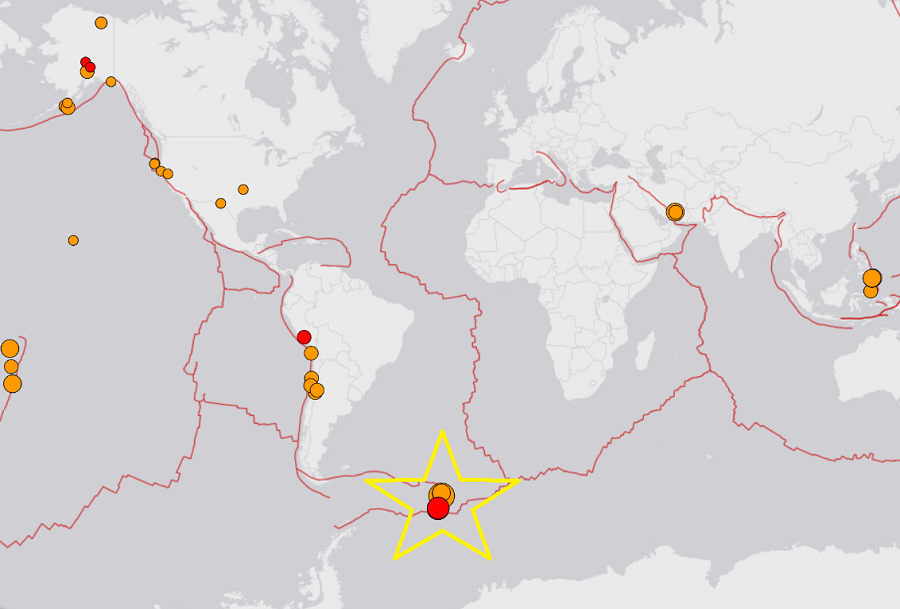
The National Tsunami Warning Center in Palmer, Alaska has issued a bulletin for the U.S. East Coast, the coast of the Gulf of Mexico, eastern Canada, and the Caribbean including Puerto Rico and the U.S. Virgin Islands in the wake of a massive earthquake that struck deep under the Atlantic Ocean today. “Earthquakes of this size are known to generate tsunamis dangerous to shorelines near the source,” the Tsunami Warning Center wrote in a bulletin. Fortunately, they add, “There is no tsunami danger for the U.S. east coast, the Gulf of Mexico states, or the eastern coast of Canada.” An additional bulletin released by the Tsunami Warning Center also gave the all-clear to all Caribbean interests.
At 2:33 pm ET today, a 7.6 earthquake struck at a depth of 48 miles in the South Sandwich Islands region of the South Atlantic Ocean. It was followed by impressive aftershocks of 5.9, 5.9, 5.7, and most recently a 6.2 which struck just before 4pm ET. The initial earthquake was centered at 57.596°S 25.187°W.
Tsunamis are giant waves caused by earthquakes or volcanic eruptions under the sea. Out in the depths of the ocean, tsunami waves do not dramatically increase in height. But as the waves travel towards land, they build up to higher and higher heights as the depth of the ocean decreases. The speed of tsunami waves depends on ocean depth rather than the distance from the source of the wave. Tsunami waves may travel as fast as jet planes over deep waters, only slowing down when reaching shallow waters. While tsunamis are often referred to as tidal waves, this name is discouraged by oceanographers because tides have little to do with these giant waves.
Today’s powerful earthquake comes on the heels of two other strong Atlantic Ocean earthquakes in recent days. On August 10, a strong earthquake struck the North Mid Atlantic Ridge. Just days earlier, on August 8, a strong earthquake struck the South Mid Atlantic Ridge. Unlike today’s quake, neither of those earthquakes was capable of creating a tsunami.
While more prevalent in the Pacific Ocean, tsunamis can and do occur within the Atlantic basin and could impact the U.S. East and Gulf Coasts in addition to all of the islands in the Caribbean. Earlier this year, officials went through two comprehensive earthquake and tsunami drills to deal with the possibility of such an Atlantic event.